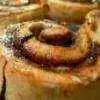-
Welcome to Celiac.com!
You have found your celiac tribe! Join us and ask questions in our forum, share your story, and connect with others.
-
Celiac.com Sponsor (A1):
Celiac.com Sponsor (A1-M):
-
Get Celiac.com Updates:Support Our Content
Gelatin
-
Get Celiac.com Updates:Support Celiac.com:
-
Celiac.com Sponsor (A17):
Celiac.com Sponsor (A17):
Celiac.com Sponsors (A17-M):
-
Recent Activity
-
- Cecile replied to Cecile's topic in Related Issues & Disorders3
Symptoms
Thank you Scott for your wonderful info. I will pry my Doctor for more extensive blood testing. I appreciate your time. -
- Jmartes71 posted a topic in Introduce Yourself / Share Stuff0
Not validated
After waisted time of new care team, yet again EXHAUSTED saw new gi today in Modesto, though all my ailments im not getting any kind of concern of me being celiac and sentive to just about everything since menopause. Dr daid why don't I go see you guys because my blood shows zero for celiac. I told him im glutenfree since 1994 by colonoscopy with biopsy positive... -
- Jmartes71 replied to Jmartes71's topic in Related Issues & Disorders4
New issue
I was taking medicine for sibo but it was not agreeing with my stomach at all.Was on gabapentin but it amps me up.I was taking in morning because it wasn't allowing me to sleep.This has always been an issue with medicine and me.Even going to dentist, the good shot that numbs you once, I can't take because it makes my heart beat fast and I get the shakes... -
- Jmartes71 replied to chrish42's topic in Doctors3
Doctors and Celiac.com
I showed one doctor I went to once because completely clueless of celiac disease and yes that one was connected to a well known hospital and she said oh thats just a bunch of people that think they are celiac coming together. I said um no they have doctors and knowledge behind what is being written. So bay area is Downplaying this site! SADLY -
- RMJ replied to Xravith's topic in Introduce Yourself / Share Stuff1
Do Gluten Enzymes actually work?
If you successfully digest gluten with enzyme supplements so it won’t give you side effects, your challenge won’t be worthwhile because the digested fragments of gluten also won’t stimulate antibody production or cause intestinal damage.
-



Recommended Posts
Archived
This topic is now archived and is closed to further replies.